Key takeaways:
- Self-publishing empowers authors by allowing creative control and direct audience connection, fostering authentic storytelling.
- Understanding technical aspects like formatting and marketing strategies is crucial for successful self-publishing.
- Networking with other writers and embracing feedback enhances the self-publishing journey and offers valuable insights into the industry.
- Setting realistic goals and maintaining patience are essential for navigating the emotional rollercoaster of self-publishing.

Understanding Self-Publishing Basics
Self-publishing is an empowering choice for aspiring authors. I vividly remember the moment I decided to take the plunge; it felt exhilarating yet daunting. What if no one liked my book? But then again, I realized that the beauty of self-publishing is that it’s all about controlling your narrative—your story gets to shine without the constraints of traditional publishing.
One of the essential aspects of self-publishing is understanding the different platforms available. I started with Amazon Kindle Direct Publishing, which turned out to be user-friendly, but I had no idea how much work went into formatting my manuscript. Have you ever felt overwhelmed by technical details, only to realize they lead to something you truly care about? Taking the time to learn and adapt not only enhanced my manuscript but also deepened my appreciation for the craft itself.
Another critical element is marketing your work. I’ll never forget my first promotional attempt, posting in forums that weren’t quite the right fit. It taught me a valuable lesson about targeting the right audience. Who knew that connecting with fellow Agatha Christie enthusiasts could make such a difference? By being strategic and intentional with your marketing efforts, you can foster a genuine connection with readers who appreciate your unique voice.
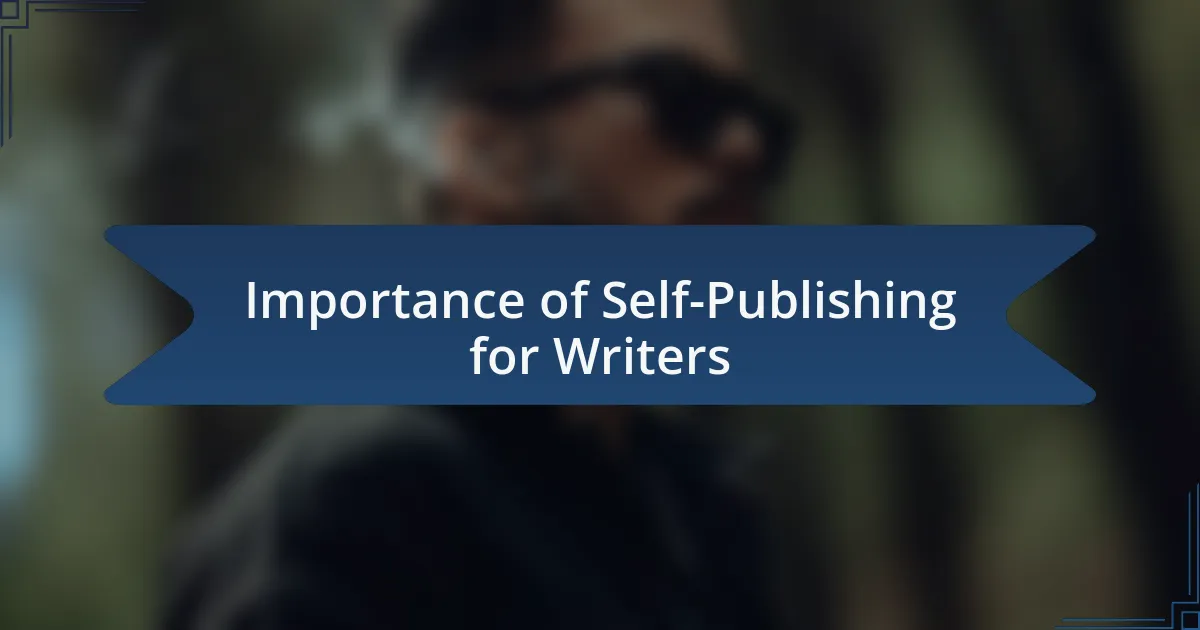
Importance of Self-Publishing for Writers
Every writer has a story worth sharing, and self-publishing opens the doors for those stories to be told. When I first published my work independently, I was struck by how liberating it felt to see my name on the cover. Have you ever felt that rush of adrenaline when you pour your heart into something deeply personal? In self-publishing, that thrill is compounded by the knowledge that you are the one steering your ship.
What I’ve come to realize is that self-publishing also allows for creative freedom that traditional publishing often restricts. I remember initially second-guessing my stylistic choices, fearing feedback from gatekeepers. But embracing this freedom meant I could express my ideas authentically, which ultimately resonated with my readers. Isn’t it empowering to reflect your true voice in your work?
Moreover, self-publishing has given me a chance to connect directly with my audience. I recall receiving heartfelt emails from readers who connected with my characters in unexpected ways. This interaction fuels my passion for writing and reminds me that each book has the potential to spark conversation and community. Isn’t it amazing how a simple story can bridge gaps and build relationships?
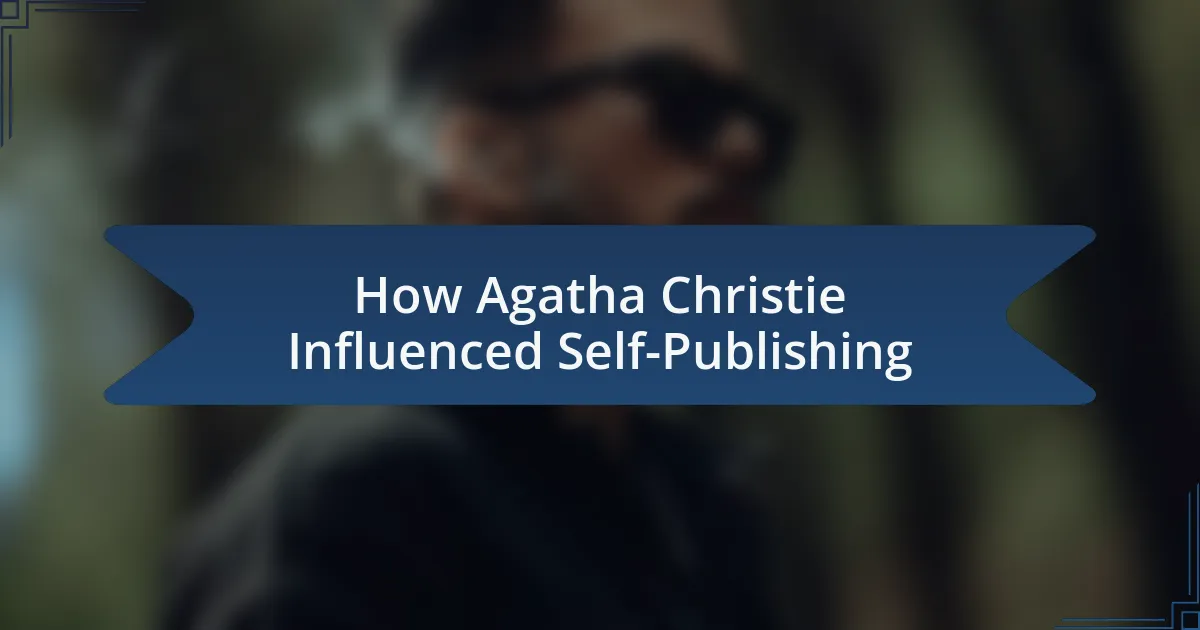
How Agatha Christie Influenced Self-Publishing
Agatha Christie, often dubbed the “Queen of Crime,” paved the way for countless authors to consider self-publishing as a viable option. I remember reading about how she was initially met with skepticism by traditional publishers, yet her determination led her to create her own path. Have you ever faced doubt and used it to fuel your resolve? Christie’s journey shows that embracing the unconventional can lead to extraordinary success.
During her career, Christie published several works through less conventional means when faced with rejection. This sparked a shift in the literary landscape, inspiring writers to take control of their narratives, much like she did. Personally, I’ve faced similar barriers—realizing that self-publishing gives me the power to tell my stories on my terms has been nothing short of liberating. Isn’t it incredible how one person’s perseverance can ignite a movement?
Furthermore, Christie’s decision to publish independently allowed her to maintain creative autonomy, a lesson I hold dear in my own writing. When I think about my own experiences, I remember the fear I had of losing my voice to outside influences. Yet, Christie’s legacy reminds us that ownership over our work can lead to authenticity and deep connections with readers. Isn’t it inspiring to think that embracing one’s true vision can create a lasting impact?
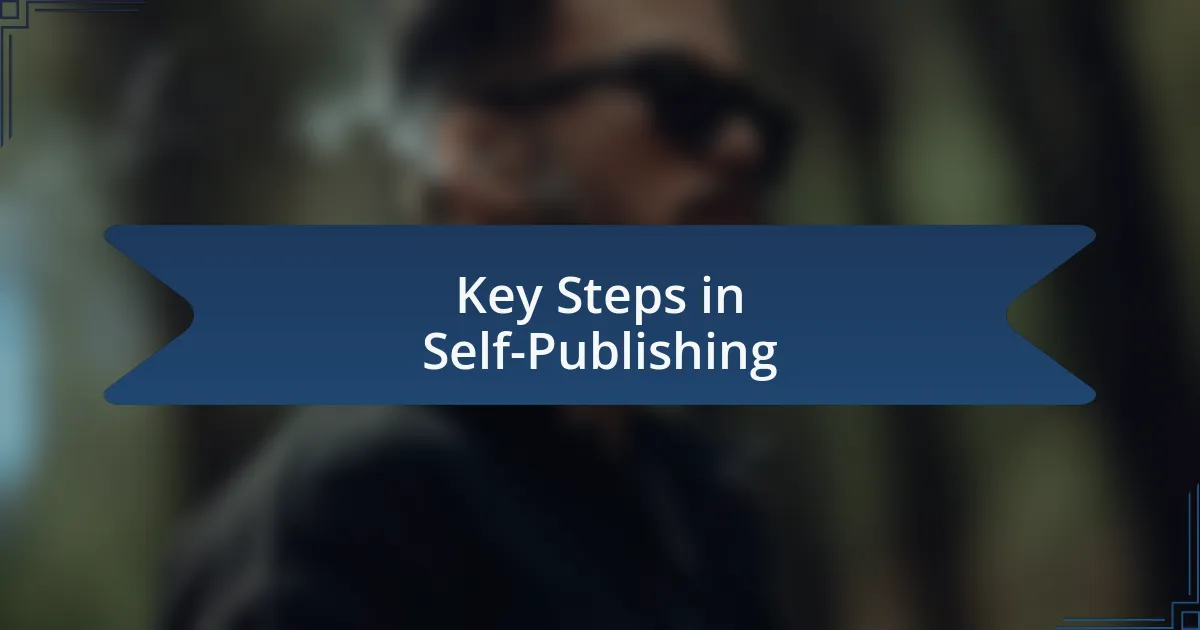
Key Steps in Self-Publishing
When it comes to self-publishing, one of the first crucial steps is identifying your target audience. I recall my own experience of hesitating to publish until I truly understood who I was writing for. By defining my readers, I discovered what themes resonated with them, ultimately shaping my narrative and marketing strategies. Have you figured out who your ideal readers are? This clarity can make all the difference in your book’s success.
Next, formatting your manuscript correctly for various platforms is essential. I remember feeling overwhelmed by the technical aspects of this process, but I soon realized that taking the time to learn about ebook and print formatting was worth it. There are many resources available today, and using tools like templates can simplify the journey significantly. Isn’t it reassuring to know that you don’t have to tackle everything alone?
Finally, promoting your work can often feel daunting, yet it’s a vital component of self-publishing. When I first launched my book, I found it helpful to connect with readers through social media and author events. Engaging with my audience turned out to be an enriching experience that not only boosted my visibility but also deepened my connection with those who supported my journey. Have you considered how you could start building your platform even before your book is released? It’s never too early to share your voice and gather an eager audience.
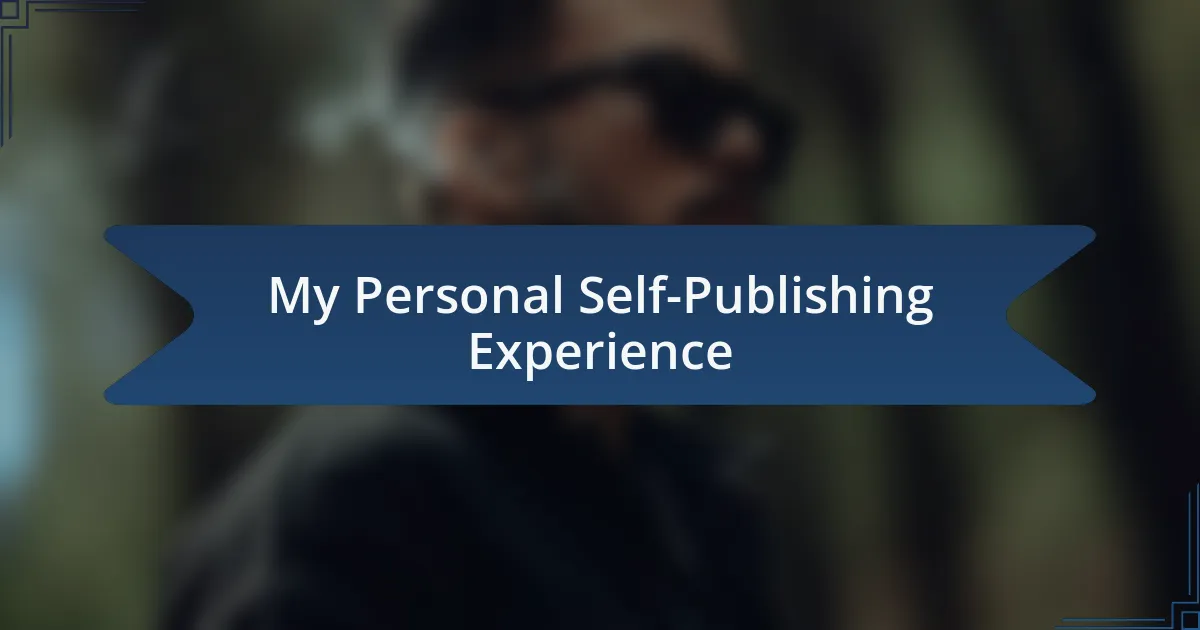
My Personal Self-Publishing Experience
Self-publishing my first book was a rollercoaster of emotions. There were moments of doubt that crept in, especially when I hit snag after snag in the publishing process. But sitting down and pouring my soul into my work was liberating; I often wondered if other aspiring authors experience this mix of enthusiasm and fear.
One pivotal moment during my journey was when I received my first proof copy in the mail. Holding that tangible representation of my hard work was surreal. I still remember the excitement tinged with anxiety—what if it wasn’t as good as I hoped? But as I flipped through those pages, I felt a surge of pride; it reminded me that every challenge along the way had been worth it.
As my book launch day approached, I wrestled with the terrifying prospect of putting my creation out into the world. I sought advice, connecting with fellow authors who had ventured into self-publishing. Their stories of vulnerability and triumph were encouraging and served as a reminder that this journey, though daunting, could also be immensely rewarding. Have you gathered your support system yet? I believe that having a network can make all the difference in navigating the highs and lows.

Lessons Learned from Self-Publishing Journey
One crucial lesson I learned during my self-publishing journey is the importance of embracing feedback. Initially, I was hesitant to share my draft with others, fearing their critiques might shatter my confidence. However, when I finally opened up and received constructive criticism, I saw my work evolve in ways I never imagined. Wasn’t it eye-opening to realize that feedback could become a powerful tool for growth?
Another significant insight was understanding marketing isn’t just an afterthought; it’s an integral part of the writing process. I vividly recall the panic I felt when my book launch approached, and I realized I hadn’t planned my marketing strategy. Diving into social media and engaging with potential readers was intimidating, yet I discovered that genuine interactions can foster a sense of community that helps promote a book organically. Isn’t it fascinating how connection can transform a solitary journey into a collaborative one?
Finally, I found that patience is as vital as passion. During the initial weeks post-launch, I anticipated immediate success, but sales were sluggish. Instead of succumbing to disappointment, I learned to view this period as an opportunity to refine my approach—and my persistence eventually paid off. Have you ever felt that momentum builds in unexpected ways when you stay committed to your vision?
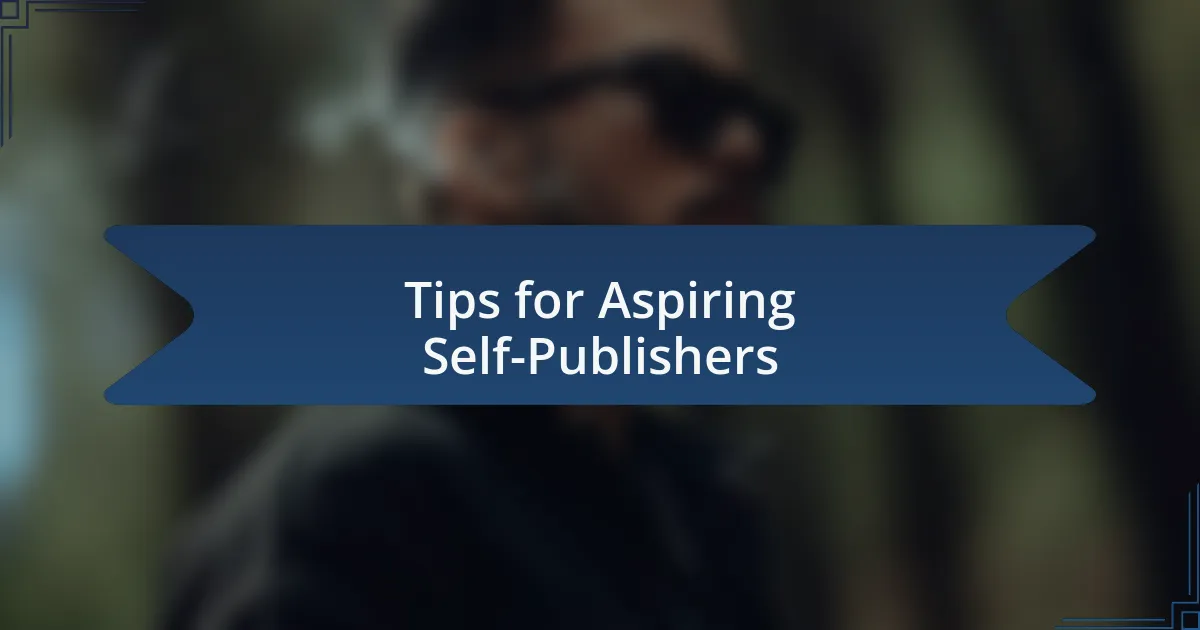
Tips for Aspiring Self-Publishers
When stepping into the world of self-publishing, I found that setting realistic goals was essential. I remember the excitement that came with my first draft being completed, but it was important to break down my publishing journey into manageable milestones. Instead of getting lost in the big picture, focusing on achievable tasks—like finalizing edits, designing a cover, or setting a launch date—made the process feel less overwhelming. Have you ever found that small achievements give you a greater sense of control and motivation?
Another key takeaway for me was the power of networking. I initially worked in isolation, thinking I could handle everything alone. However, attending writing workshops and joining online author communities transformed my experience. Connecting with fellow writers provided not only encouragement but also invaluable insights into the industry. Isn’t it incredible how a simple conversation can spark inspiration or open doors to opportunities you didn’t even know existed?
Finally, I learned the importance of a professional presentation. Early on, I was tempted to overlook details like cover design and formatting, thinking they didn’t matter as much. However, after seeing how a visually appealing presentation impacted my readers’ first impressions, I quickly realized that these elements can significantly influence a book’s success. Have you noticed how a stunning cover can draw you in and make you eager to read more?